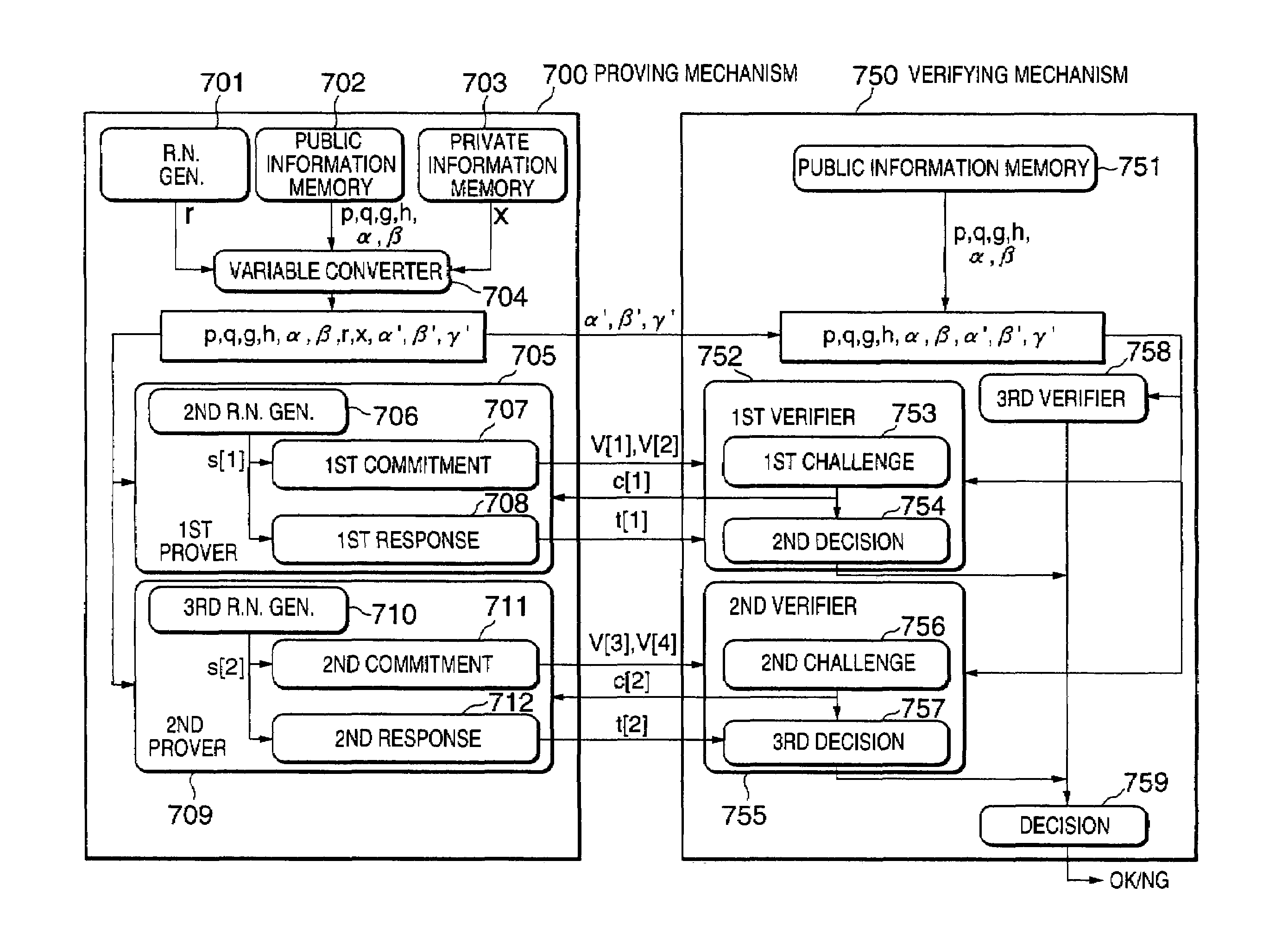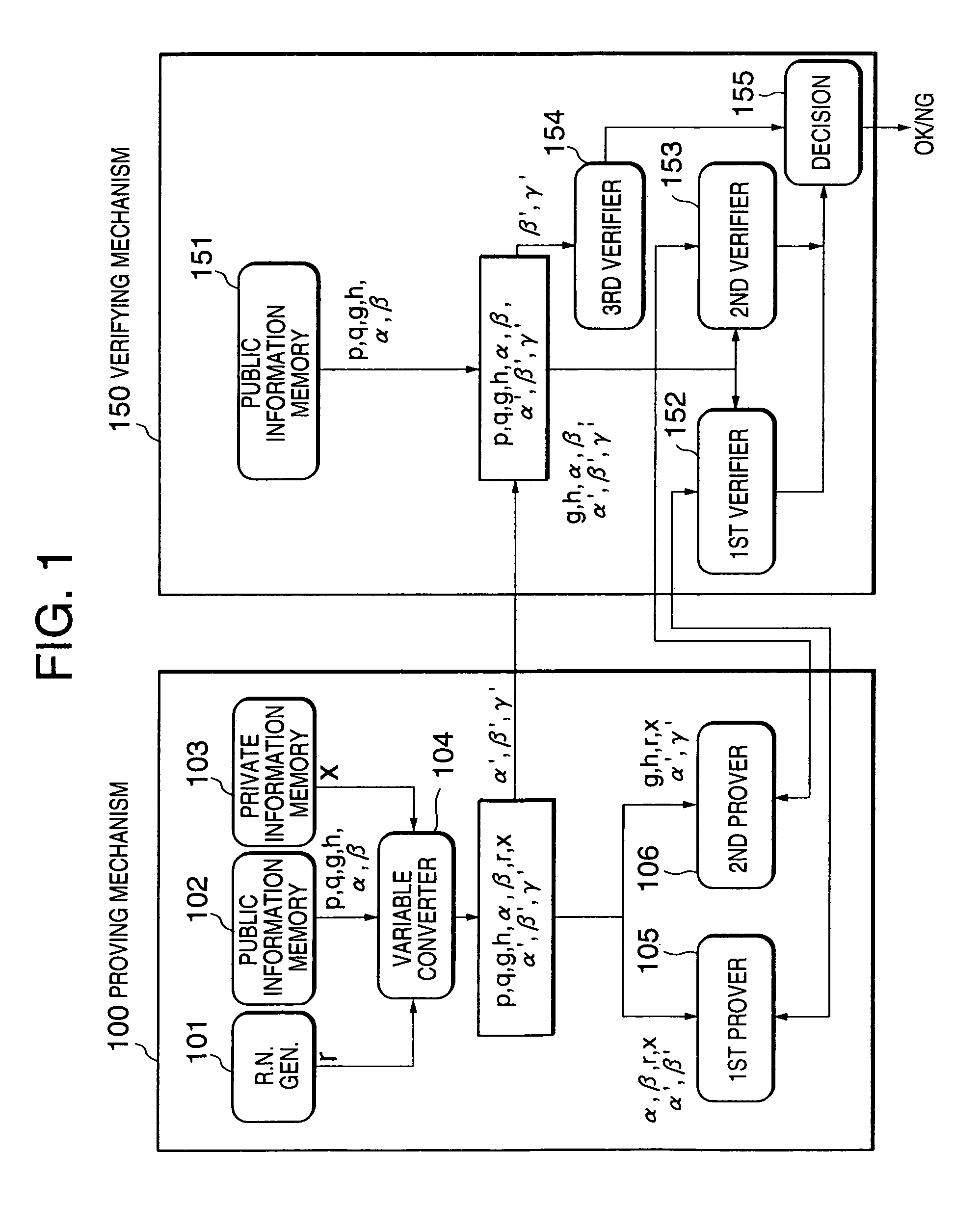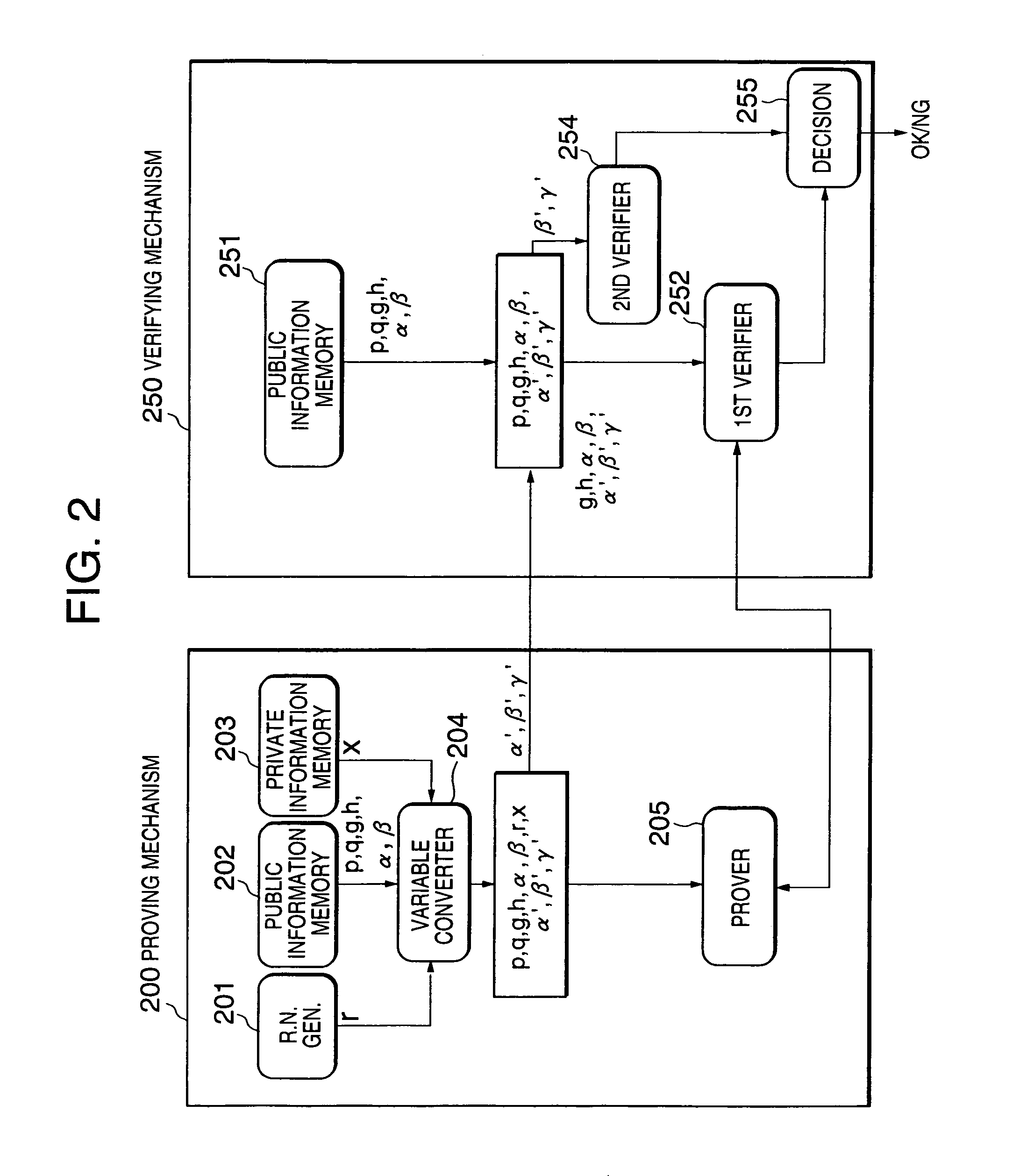Zero-knowledge proving system and method
a technology of knowledge proving and zero knowledge, applied in the field of zero knowledge proving techniques, can solve the problems of leaking important information, the prover is unable to prove the inequality alone,
- Summary
- Abstract
- Description
- Claims
- Application Information
AI Technical Summary
Benefits of technology
Problems solved by technology
Method used
Image
Examples
embodiments
1. First Embodiment
[0099]1.1) System Configuration
[0100]Referring to FIG. 7, the system has a proving mechanism 700 and a verifying mechanism 750. The proving mechanism 700 includes a random number generator 701, a public information memory 702, a private information memory 703, a variable converter 704, a first prover 705 and a second prover 709. The first prover 705 includes a second random number generator 706, a first commitment section 707, and a first response section 708. The second prover 709 includes a third random number generator 710, a second commitment section 711, and a second response section 712. The random number generator 701, the variable converter 704, the first prover 705 and the second prover 709 may be implemented by running corresponding programs on a computer.
[0101]The verifying mechanism 750 includes a public information memory 751, a first verifier 752, a second verifier 755, a third verifier 758, and a decision section 759. The first verifier 752 includes...
second embodiment
2. Second Embodiment
[0126]2.1) System Configuration
[0127]Referring to FIG. 8, the system according to the second embodiment includes a proving mechanism 800 and a verifying mechanism 850, in which a first prover 801 and a first verifier 851 are different from those of the first embodiment as shown in FIG. 7, Therefore, FIG. 8 shows only the first prover 801 and the first verifier 851, and other functional blocks are the same as shown in FIG. 7.
[0128]The first prover 801 includes a second random number generator 802, a first commitment section 803, and a first response section 804. The first verifier 851 includes a first challenge preparation section 853, a first challenge section 854 and a second decision section 855. As in the case of the first embodiment, the first prover 801 and a first verifier 851 may be implemented by running corresponding programs on a computer.
[0129]The first prover 801 and the first verifier 851 communicate with each other such that first challenge preparat...
third embodiment
3. Third Embodiment
[0139]3.1) System Configuration
[0140]Referring to FIG. 9, the system according to the third embodiment includes a proving mechanism 900 and a verifying mechanism 950, in which a first prover 901 and a first verifier 951 are different from those of the first embodiment as shown in FIG. 7. Therefore, FIG. 9 shows only the first prover 901 and the first verifier 951, and other functional blocks are the same as shown in FIG. 7.
[0141]The first prover 901 includes a second random number generator 902, a first commitment section 903, a first automatic challenge section 904, a first response section 905, and a first proven text sending section 906. The first verifier 951 includes a first automatic challenge section 952 and a second decision section 953.
[0142]The first commitment section 903 uses a random number s[1] to convert α and β to produce first commitments v[1] and v[2]. The first automatic challenge section 904 produces first automatic challenge c[1] from the firs...
PUM
 Login to View More
Login to View More Abstract
Description
Claims
Application Information
 Login to View More
Login to View More - R&D
- Intellectual Property
- Life Sciences
- Materials
- Tech Scout
- Unparalleled Data Quality
- Higher Quality Content
- 60% Fewer Hallucinations
Browse by: Latest US Patents, China's latest patents, Technical Efficacy Thesaurus, Application Domain, Technology Topic, Popular Technical Reports.
© 2025 PatSnap. All rights reserved.Legal|Privacy policy|Modern Slavery Act Transparency Statement|Sitemap|About US| Contact US: help@patsnap.com



